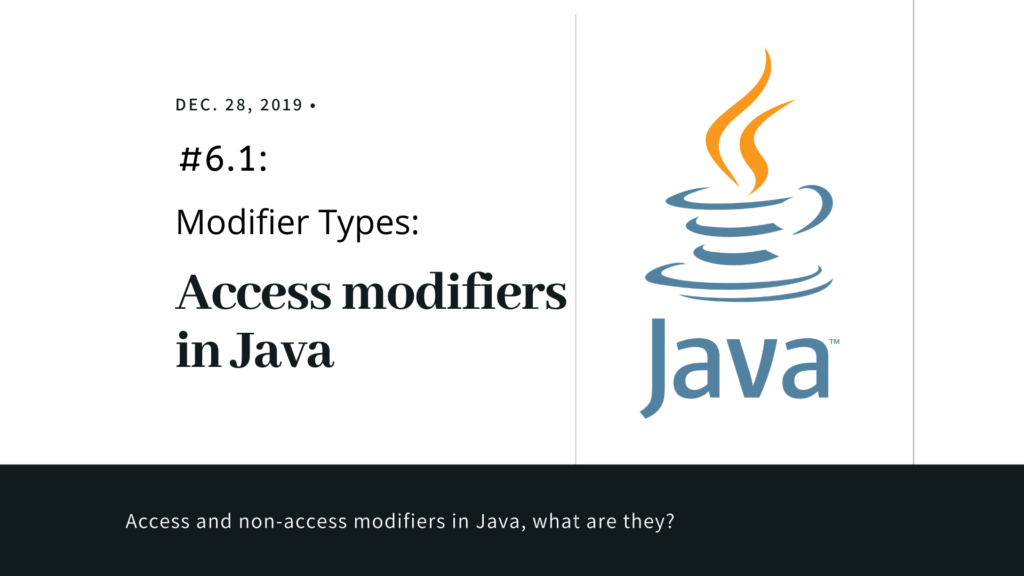
Learn Java from Scratch Access modifiers in Java Learn To Code Together
Access Modifiers - controls the access level Non-Access Modifiers - do not control access level, but provides other functionality Access Modifiers For classes, you can use either public or default: For attributes, methods and constructors, you can use the one of the following: Non-Access Modifiers For classes, you can use either final or abstract:

ModifiersTypesInJavapng.jpg
A modifier is a programming construct in Java used to modify/refine/restrict a declaration. With modifiers, developers can restrict access, limit class instantiation to a single instance, disallow value modification, control persistent storage, configure sharing of variables across threads, and more.
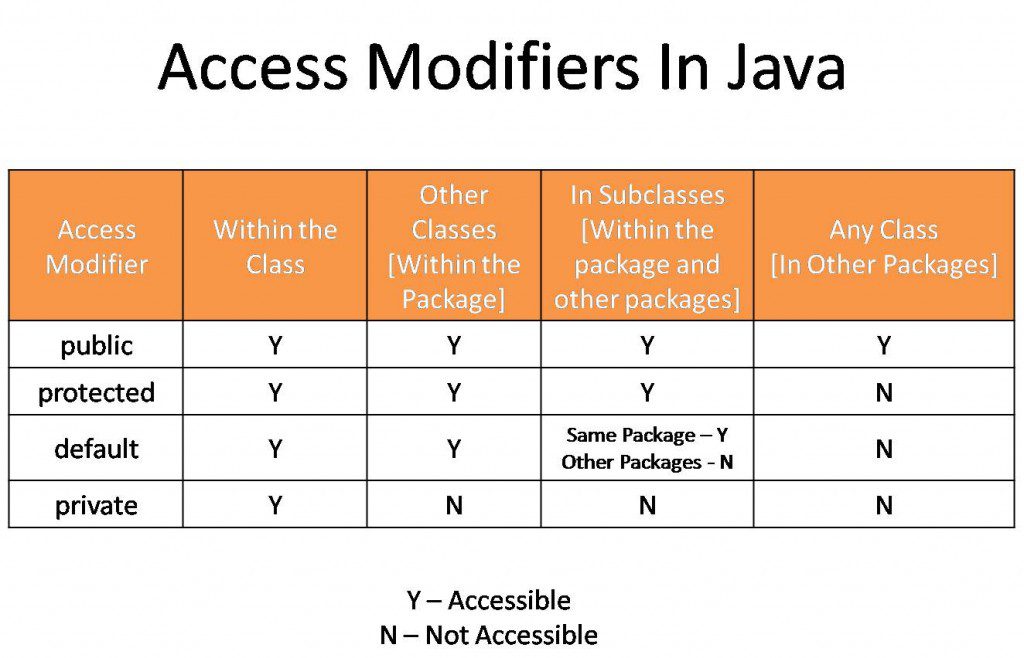
4 Type Of Java Access Modifiers Explained With Examples Mps Riset
Java provides a number of access modifiers to set access levels for classes, variables, methods and constructors. The four access levels are: Visible to the package. the default. No modifiers are needed. Visible to the class only private. Visible to the world public. Visible to the package and all subclasses protected.

Access Modifiers In Java
Javatpoint.com-Access Modifiers in Java - Free download as PDF File (.pdf), Text File (.txt) or read online for free. Java. Java. Open navigation menu. Close suggestions Search Search. en. There are 4 types of java access modifiers: 1. private 2. default 3. protected 4. public There are many non-access modifiers such as static, abstract.
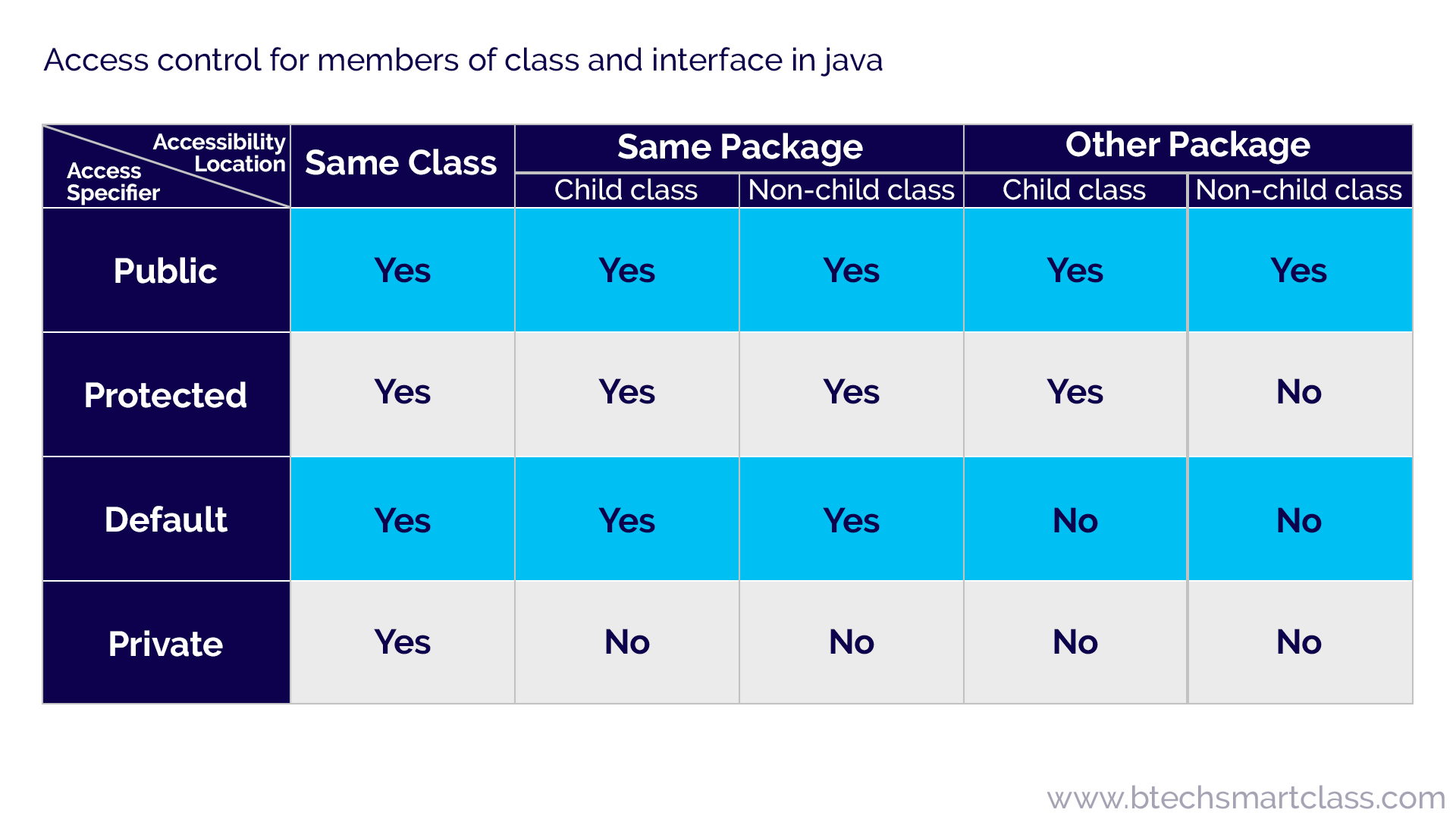
Java Tutorials Access Modofiers Specifiers default public private protected
#1) Access Modifiers Access modifiers in Java allow us to set the scope or accessibility or visibility of a data member be it a field, constructor, class, or method. #2) Non-access Modifiers Java also provides non-access specifiers that are used with classes, variables, methods, constructors, etc.

Access Modifiers in Java Different Types of Java Access Modifiers
A. Müller, "Bytecode analysis for checking Java access modifiers," in Proc. of the Work-in-Progress Session at the 8th International Conference on the Principles and Practice of Programming in.
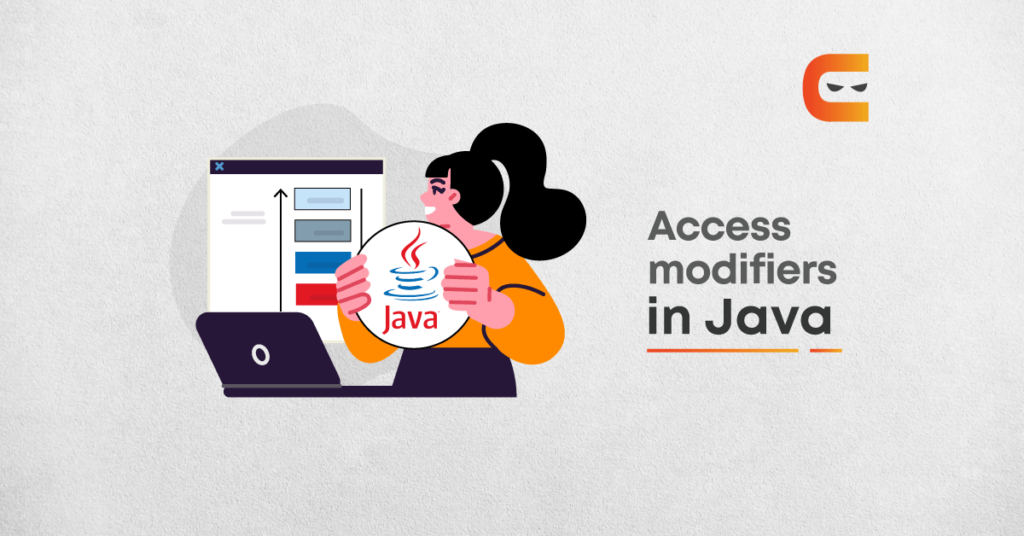
A Complete Guide On Access Modifiers In Java Coding Ninjas Blog
The access modifiers in java specifies accessibility (scope) of a data member, method, constructor or class. There are 4 types of java access modifiers: 1 private 2 default 3 protected 4 public There are many non-access modifiers such as static, abstract, synchronized, native, volatile, transient etc. Here, we will learn access modifiers.
Easy Java Concept Access Modifier
Access modifiers are object-oriented programming that is used to set the accessibility of classes, constructors, methods, and other members of Java. Using the access modifiers we can set the scope or accessibility of these classes, methods, constructors, and other members. JAVA has two types of modifiers: access modifiers and non-access modifiers.

What are Access Modifiers in JAVA? Types & Examples DataTrained Data Trained Blogs
There are four types of access modifiers available in Java: Default - No keyword required Private Protected Public 1. Default Access Modifier When no access modifier is specified for a class, method, or data member - It is said to be having the default access modifier by default.
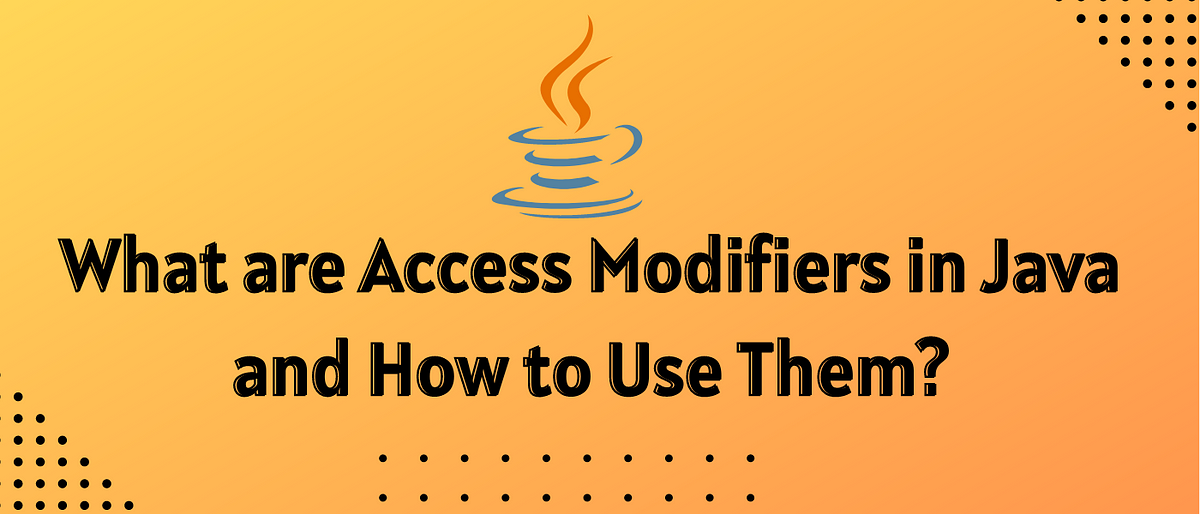
What are Access Modifiers in Java and How to Use Them? by AlishaS Level Up Coding
What are Access Modifiers? In Java, access modifiers are used to set the accessibility (visibility) of classes, interfaces, variables, methods, constructors, data members, and the setter methods. For example, class Animal { public void method1() {.} private void method2() {.} }
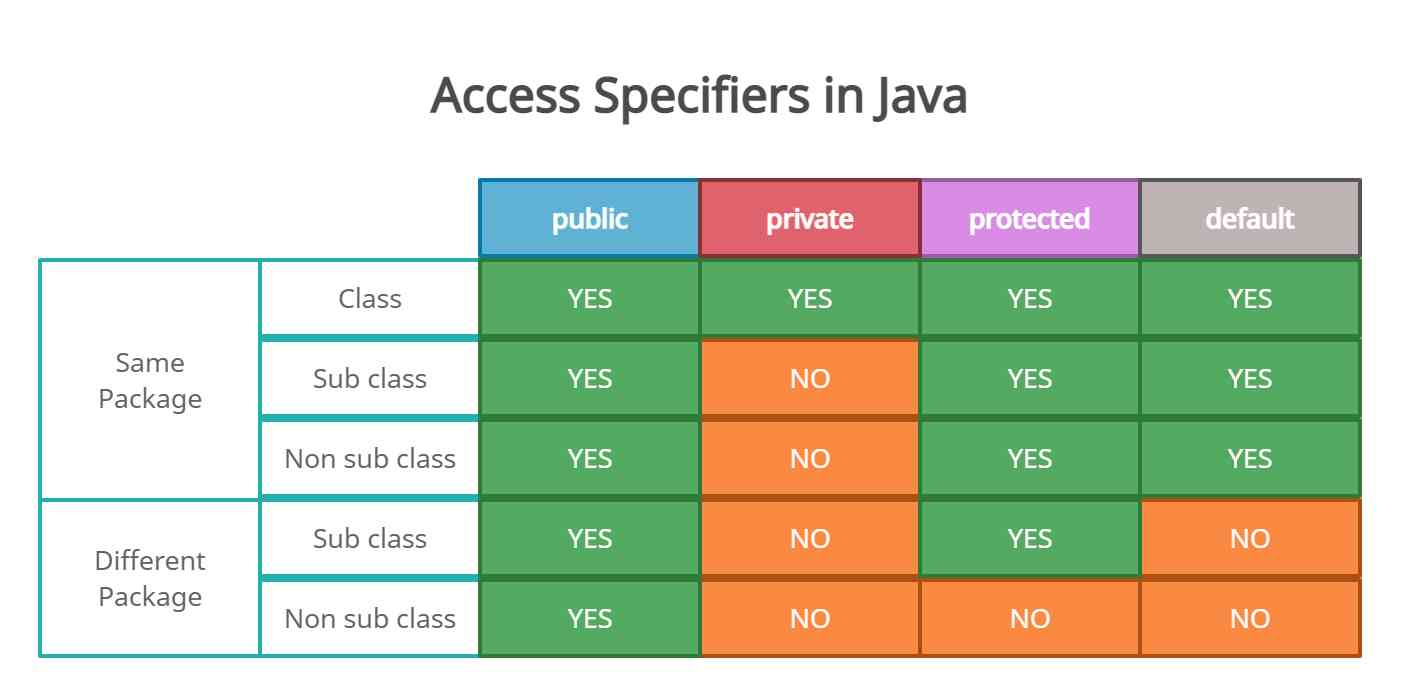
What are Access Modifiers in Java? UseMyNotes
Access Modifiers in Java - Free download as Word Doc (.doc / .docx), PDF File (.pdf), Text File (.txt) or read online for free. SIMPLE NOTES ON Access Modifiers in Java
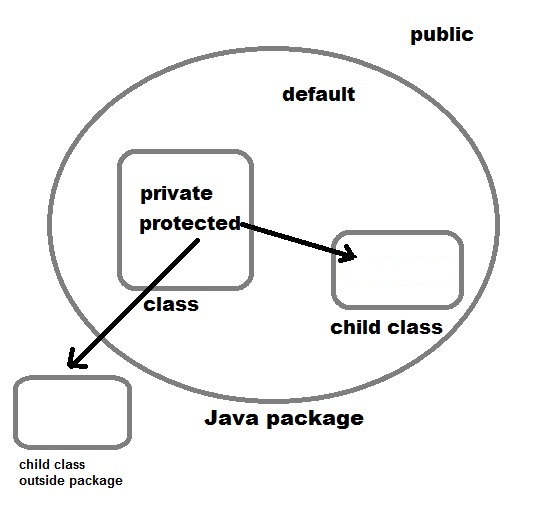
Access and Nonaccess Modifiers in Core Java Core Java Tutorial Scanftree
Access modifiers in Java are special keywords that control the visibility of class members, including variables, methods, and inner classes. They determine which parts of a class can be accessed from outside the class. These modifiers ensure data encapsulation, which means that sensitive information is hidden from unauthorized access.
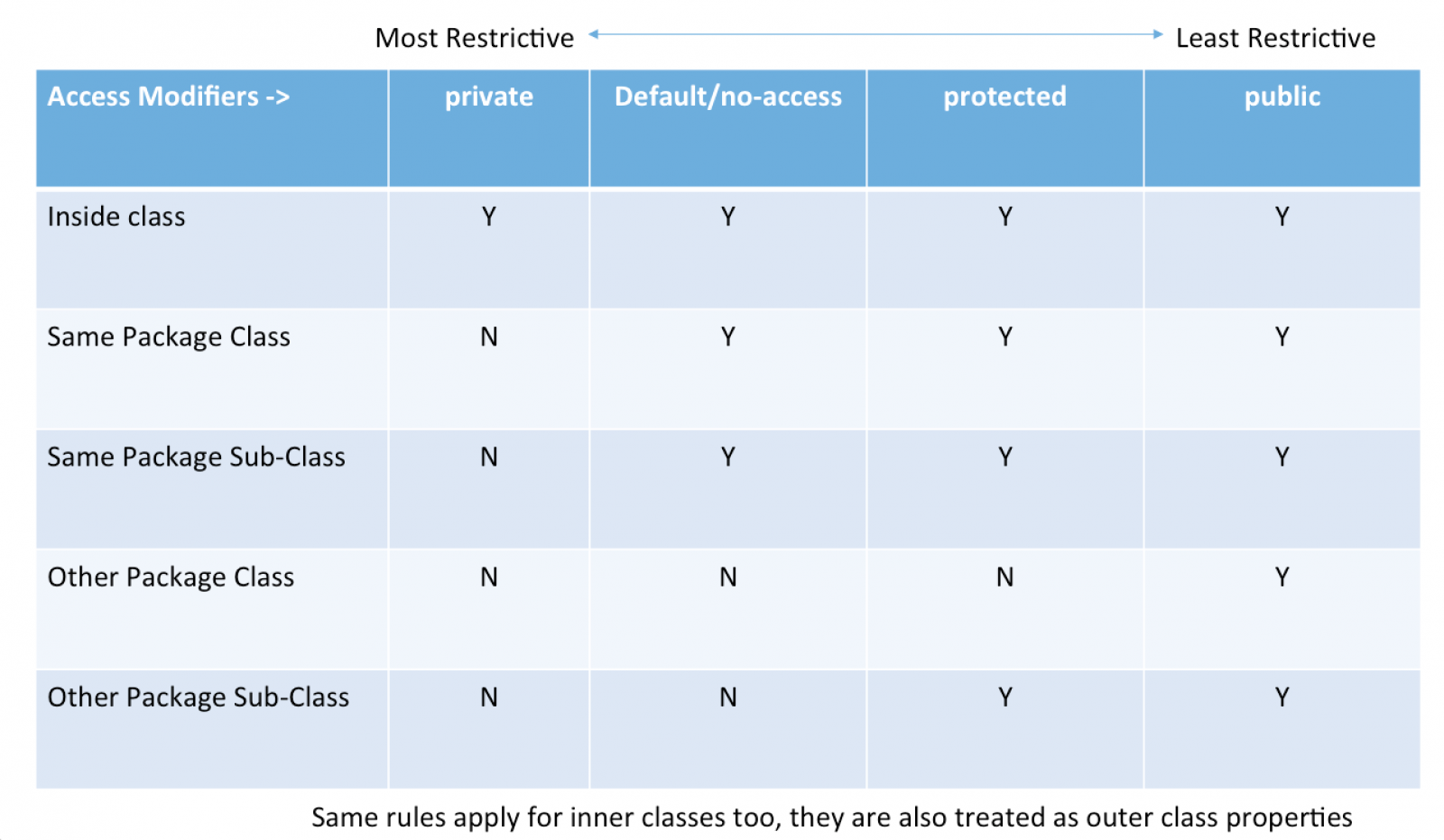
Java Access Modifiers DigitalOcean
Simply put, there are four access modifiers: public, private, protected and default (no keyword). Before we begin let's note that a top-level class can use public or default access modifiers only. At the member level, we can use all four. 2. Default.

What are the allowed access modifiers for Interfaces? Java Interface (Allowed access modifiers
The access modifiers in Java specifies the accessibility or scope of a field, method, constructor, or class. We can change the access level of fields, constructors, methods, and class by applying the access modifier on it. There are four types of Java access modifiers: Private: The access level of a private modifier is only within the class.

Access Modifiers in Java Public, Private, Protected, and Package Examples Java67
Introduction to Access Modifier. Access modifiers encapsulate sensitive info & provide different types of restrictions depending on the requirement. It restricts the scope of class variables, methods, & constructors. Which of the following are types of Java access modifiers?
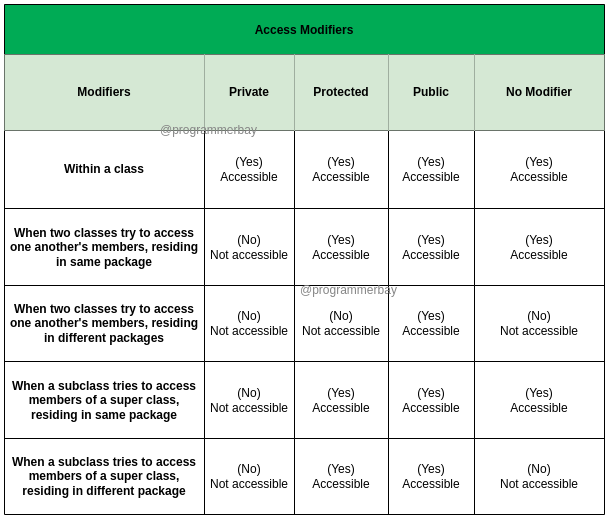
Java Access Modifiers With Program Example Programmerbay
Access modifiers are used to specify the accessibility or access levels of a type (class, interface) and its members (methods, variables and even constructors). There are three access modifiers and four access levels in Java. The three access modifiers are are private, protected and public.